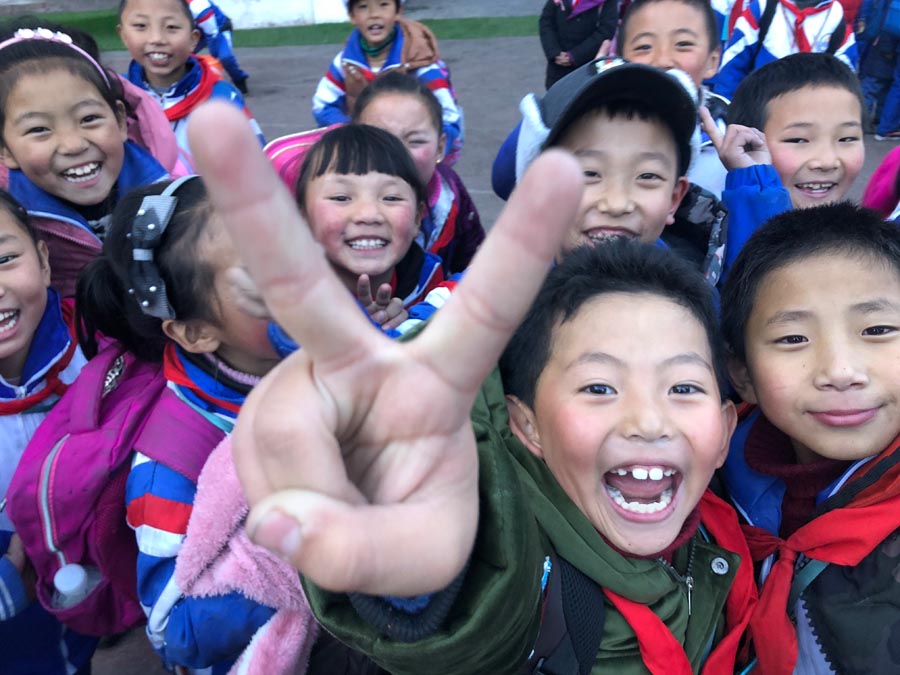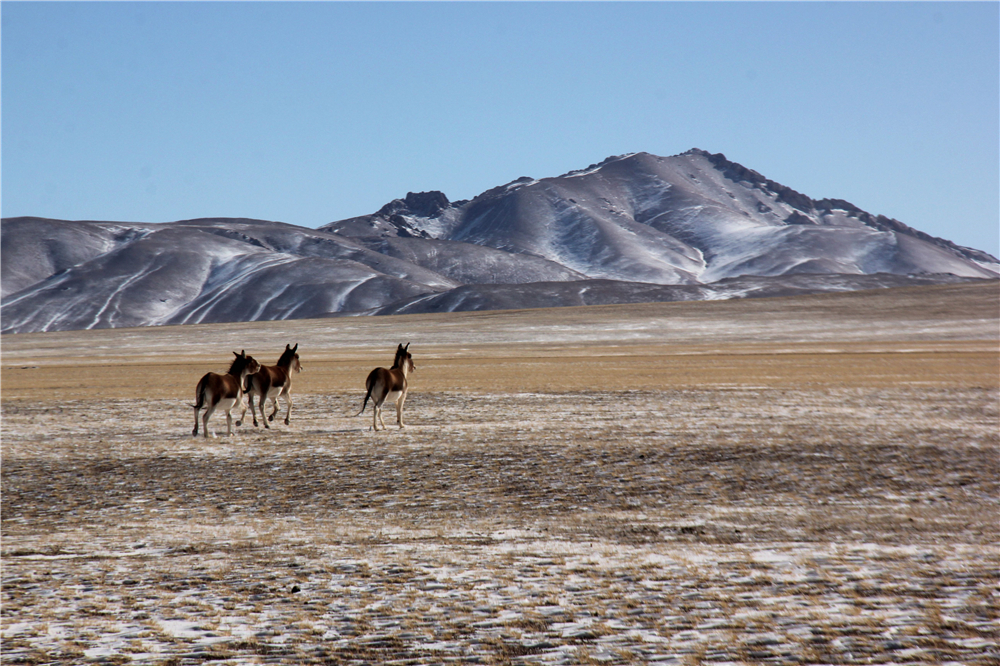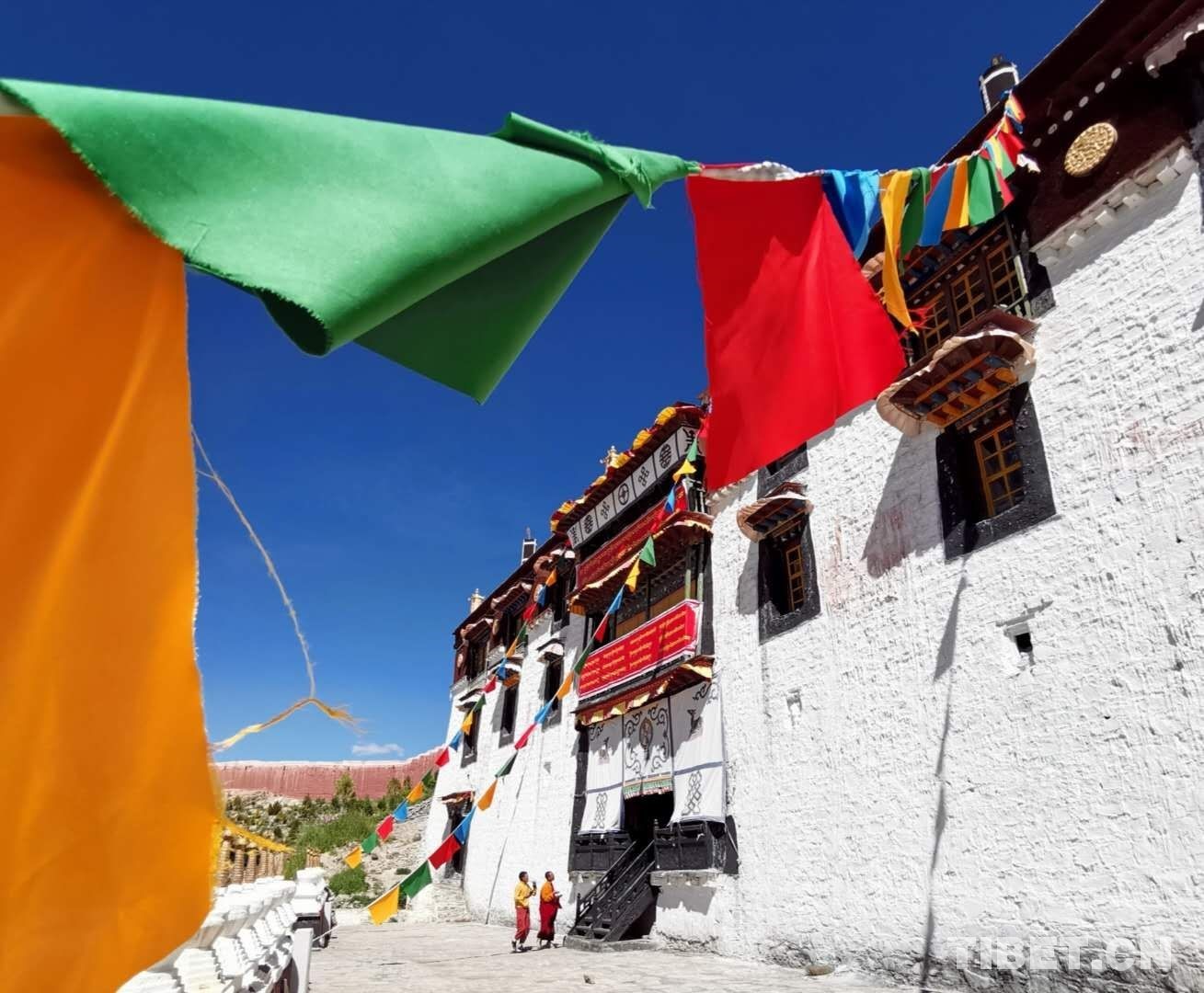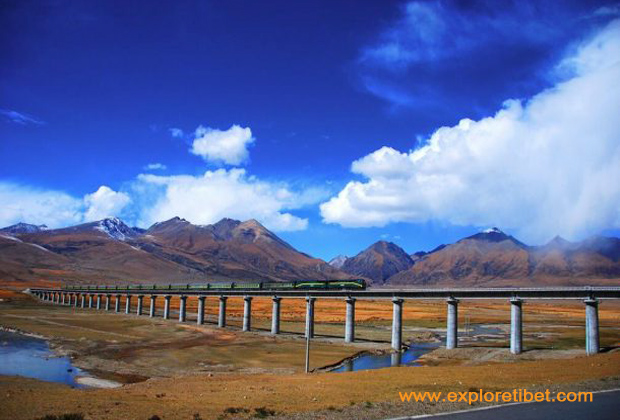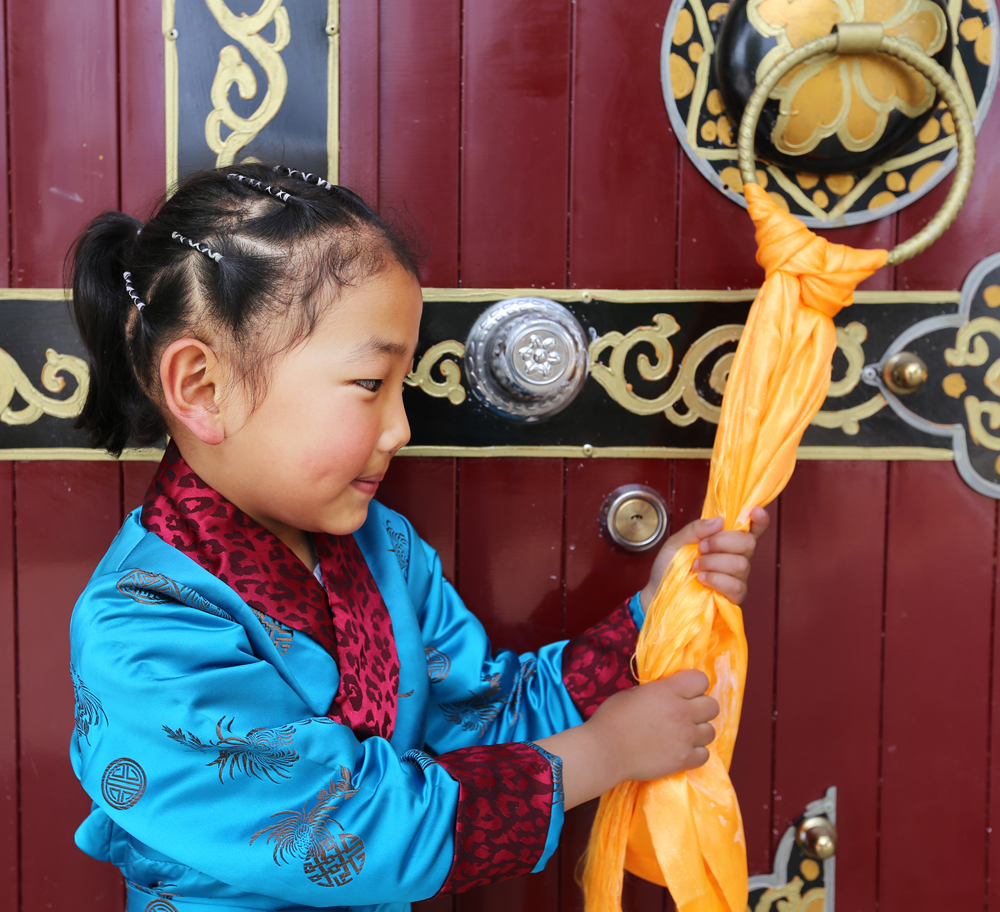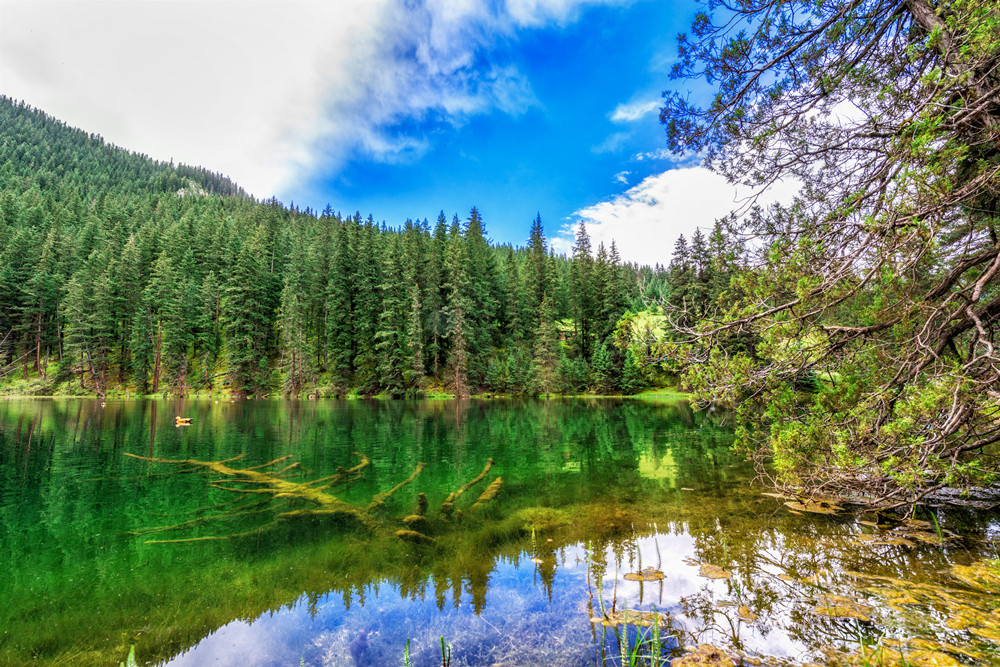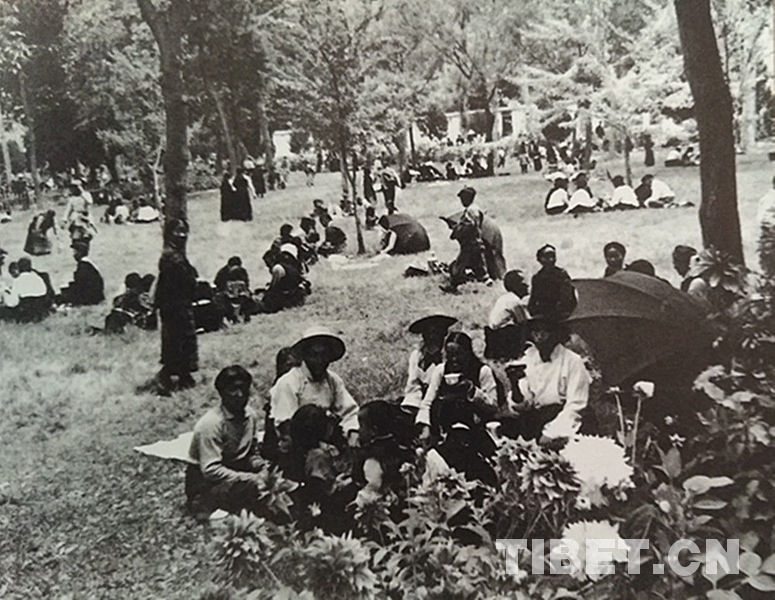A thangka cooperative hidden in the mountains
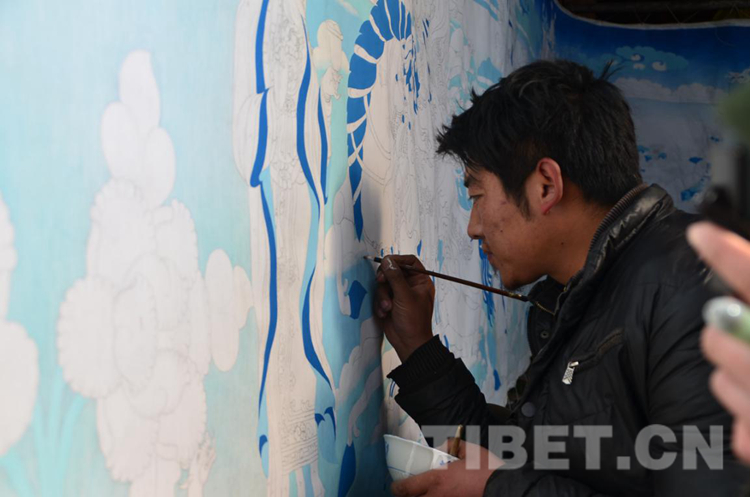
In Lodoi Village in Kargang Township, Jomda County, Chamdo City, southwest China's Tibet Autonomous Region, following the highway to the dirt road up the mountain, after bumping along the whole way, you will come to the mountain home of Shere Choju, an eighth-generation heir of Lhabatsang Miansa Thangka School. This home is also a professional thangka cooperative for farmers and herdsmen.
Entering the door, through the curtain, the plateau sunlight penetrates the glass ceiling, and a 17.5-meter-long thangka is hanging before us. Three of Shere Choju's apprentices are gathered to paint in front of this thangka. The piece was started four months ago, and it is estimated that it will take one year before it is completed. This is not considered a long time here.
Shere Choju tells us that in order to paint thangka, you need to flatten the canvas with water and stones. After you make sure the canvas is flat, hold a charcoal pencil to draw the fine lines and apply the five main colors, white, yellow, red, green, and blue. Color it five times in succession. The details of the face and hands are the richest, the most difficult, and the final step. After complicated steps and months or years of fine dyeing, the thangka is finally formed. The completed thangka painting of Miansa School has a thick bottom layer, and the figures have thick limbs and full faces. At the same time, it integrates the characteristics of the Gachi Thangka School. It has rich layers when rendering and makes good use of gray to represent skin color. These thangkas paintins have strict measurement and bright colors.
On a table near the door, Shere Choju picks up a yellowed Tibetan book and tells us about it. He says it is the "painting standard" handed down from generation to generation in his family. It records the proportion of various statues. When learning to draw thangka painting, you must start with the classic proportions of statues, understand the structure of the human body, and then start copy training for the clothing. During this period, students must learn how to make canvases and writing brushes and how to grind, make, and use mineral and plant pigments.
A wooden board on the other side of the table is the "drawing board". Before being able to draw skillfully, students must use butter and coal ash to paint on wooden boards, and then use wooden pencils to paint on the board to practice. When the board is full of paintings, they just need to scrape it off with a pen. After a long time, they can reapply butter and soot and start practicing again. It usually takes about six years between beginning to study and finally drawing independently, during which an apprentice needs to concentrate on the complicated steps of thangka painting in order to truly learn.
In 2016, Shere Choju established a farmer and herdsman professional thangka painting cooperative, which is a poverty alleviation industry in the village. Those who become apprentices can learn thangka painting here, live here, and earn a salary.
Today, Shere Choju and his Lhabatsang Miansa Thangka School continue the family tradition and help more and more people to earn more money.
Editor:Tommy Tan.
Tibet Stories
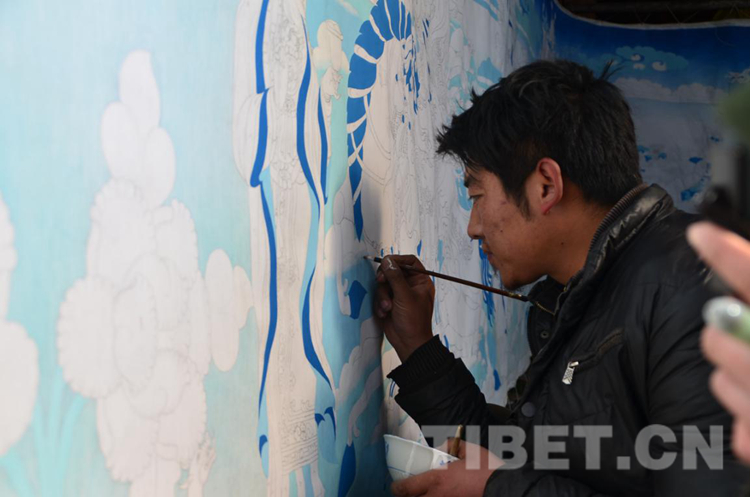
A thangka cooperative hidden in the mountains
Today, Shere Choju and his Lhabatsang Miansa Thangka School continue the family tradition an...
Editor’s Choice
- Snow leopard and leopard photographed in Batang, Sichuan Province
- World's highest county included in State Grid electric coverage
- The 7th Beijing International Seminar on Tibetan Studies
- Contributions are welcome from you
- Symposium for anniversaries of China's Tibet magazine and China Tibet Online held
